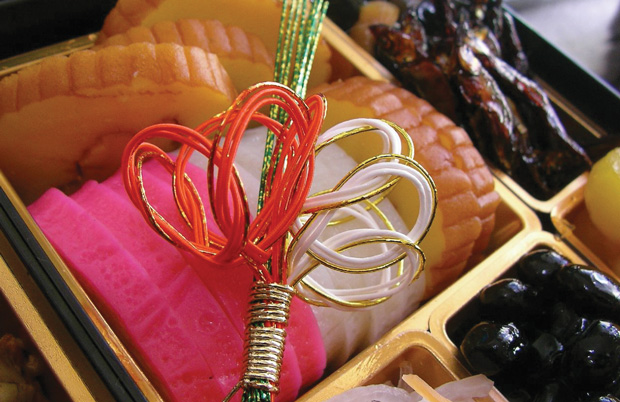No Japanese holiday or custom would be complete without traditional foods, and the New Year celebration has many.
The most auspicious tradition is that of the New Year’s soba, called toshikoshi soba, or noodles for the passing of the new year. People eat it at midnight, or as their first meal of the New Year, using the long noodles to symbolize longevity and prosperity.
Japanese people try to prepare other foods for the following three days in advance of New Year’s eve. No one wants to be cooking or working at that time, so the traditional foods are often cold ones, or those that can be preserved for at least a few days without spoiling. These foods, called osechi, are served in beautiful lacquer boxes, which were filled and prepared earlier.
Another traditional food is mochi, or pounded rice. Many families make it at home by putting rice in a wooden bowl, sprinkling it with water and then pounding it with a large, wooden mallet. The rice then becomes glutinous and can easily be formed into balls, which are often rolled in either nori (seaweed) or even sugar for flavoring. Sometimes the mochi is put into a soup called ozoni, which has base of either fish stock or soybean paste, depending on the region of Japan.
Seaweed, fish cakes, sweet potato and black soybeans, and simmered burdock are some of the other foods eaten at New Year’s time. All are designed for storage in the laquer boxes so they don’t need much refrigeration. The food for the New Year varies from region to region in Japan, and each area has its own traditions.
Read More: When the sun rises on a New Year in Japan
HAJIME NAKANO PHOTO








